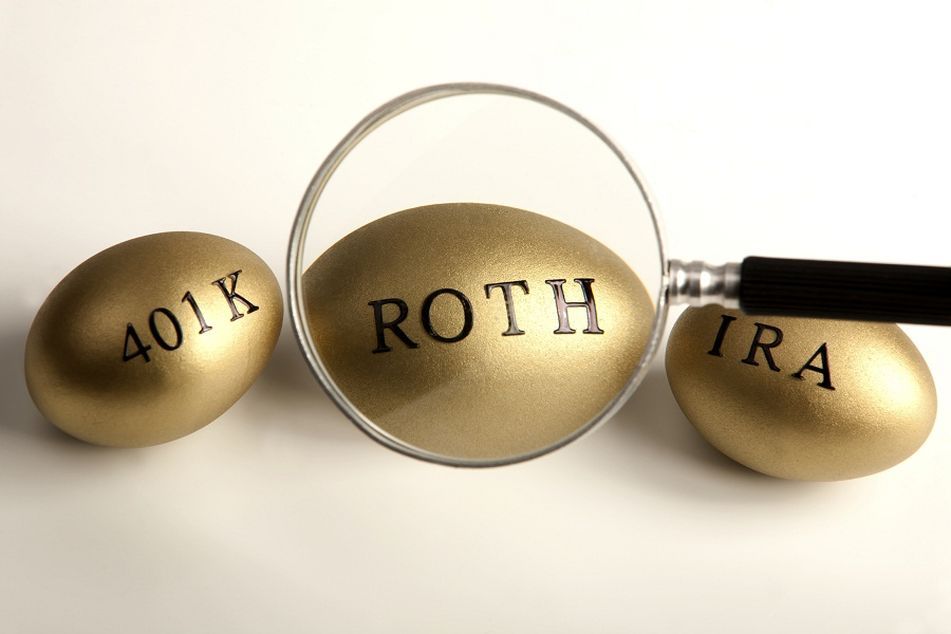Gradually converting a traditional IRA to a Roth can boost nest egg

Plus, the strategy can help reduce required minimum distributions and cut taxes.
The first wave of baby boomers who turned 70 ½ this year must start tapping their traditional retirement accounts soon and pay taxes on those required minimum distributions.
For those first boomers who turn 70 ½ this year, who were born from January through June 1946, their first distribution is due by the end of 2016. But a special first-year rule allows them to postpone their initial distribution until April 1 of the following year. However, if they opt to delay they would have to take their second distribution by Dec. 31, 2017, resulting in a double payout next year and an even higher tax bill.
After that, required minimum distributions will be due each year by Dec. 31 based on the year-end account balance for the prior year divided by the account holder’s remaining life expectancy as determined by the IRS life expectancy tables. Failure to withdraw at least the minimum amount results in a tax penalty equal to 50% of the amount that was not withdrawn.
For affluent clients who do not need the retirement account distributions to live on, the RMDs can create an unwelcome tax liability that could subject more of their Social Security benefits to tax and boost their future Medicare premiums, both of which are tied to income.
Deciding whether to convert to a Roth IRA hinges on issues like your tax rate now versus later, the tax bill you’ll have to pay to convert, and your future plans for your estate. Some of the benefits of converting to a Roth IRA include eliminating federal income taxes on your future withdrawals and leaving a tax-free bequest to your heirs.
Converting assets from a tax-deferred account into a Roth IRA all at once can trigger a huge tax bill, but a staggered conversion strategy that stretches out the tax bill over time can make sense. While it may be too late for many leading-edge boomers to take advantage of this gradual conversion strategy, it can pay off handsomely for younger clients who are willing to bite the tax-bullet now rather than gamble on an uncertain future. Roth conversions are permitted after age 70½, but annual required minimum distributions from a traditional retirement account cannot be included in the converted amount.
A recent analysis by T. Rowe Price shows how a staggered Roth IRA conversion strategy can reduce RMDs and tax liabilities while preserving more of a client’s assets. Unlike tax-deferred accounts, Roth IRAs are not subject to RMDs. Additionally, qualified Roth distributions are not taxed as long as withdrawals are taken after age 59 ½ and the account has been held for at least five years.
T. Rowe Price examined how an investor who will not need her RMDs may use Roth IRA conversions to lower her taxable income. Converting to a Roth IRA over time can also reduce the balance of the traditional retirement accounts so the future RMDs are less.
In the study’s first scenario, the investor keeps her money in a traditional IRA. In the other three scenarios, the investor converts $40,000 each year into a Roth IRA beginning at ages 55, 60, and 65 and stops converting assets at age 70½, when she would need to begin taking RMDs from the IRAs.
An analysis of four scenarios show that staggering Roth conversation from traditional IRAs starting at age 55 can reduce total RMDS and lead to potentially higher account values. This analysis considers a hypothetical married investor with an annual household income of $190,000 in the 28% tax bracket. The 54-year-old-investor has $500,000 saved for retirement in a traditional IRA and $130,000 in a taxable account. She continues to contribute the maximum $6,500 to the traditional IRA until age 65.
The study assumed the following: Assets in the taxable account were used to cover the tax liability from the conversion; the RMDs from the tax-deferred account were reinvested in the taxable account; the taxable account grew at a tax-adjusted rate of 4.32% and the tax-deferred account and Roth IRA grew an average of 6% per year.
By starting the conversion at age 55, the investor would have nearly $800,000 more in assets by age 95, accumulating about $5.2 million between her Roth IRA, traditional IRA and taxable accounts. She still faces some RMDs, but she will pay $300,000 less in taxes than if she had not done any conversion. In addition, the converted assets in the Roth account continue to benefit from potential tax-advantaged growth.
The longer you have until retirement and the longer you live in retirement, the more time you have for a Roth IRA’s potential growth to make up for the taxes you originally paid on the conversion amount. The challenge for financial advisers is to help their clients diversify not only the types of investments they hold, but the taxability of those assets in order to minimize taxes and Medicare premiums and create more spendable income in retirement.
(Questions about Social Security? Find the answers in my e-book: Maximizing Social Security Retirement Benefits.)
Mary Beth Franklin is a contributing editor to InvestmentNews and a certified financial planner.
Learn more about reprints and licensing for this article.








